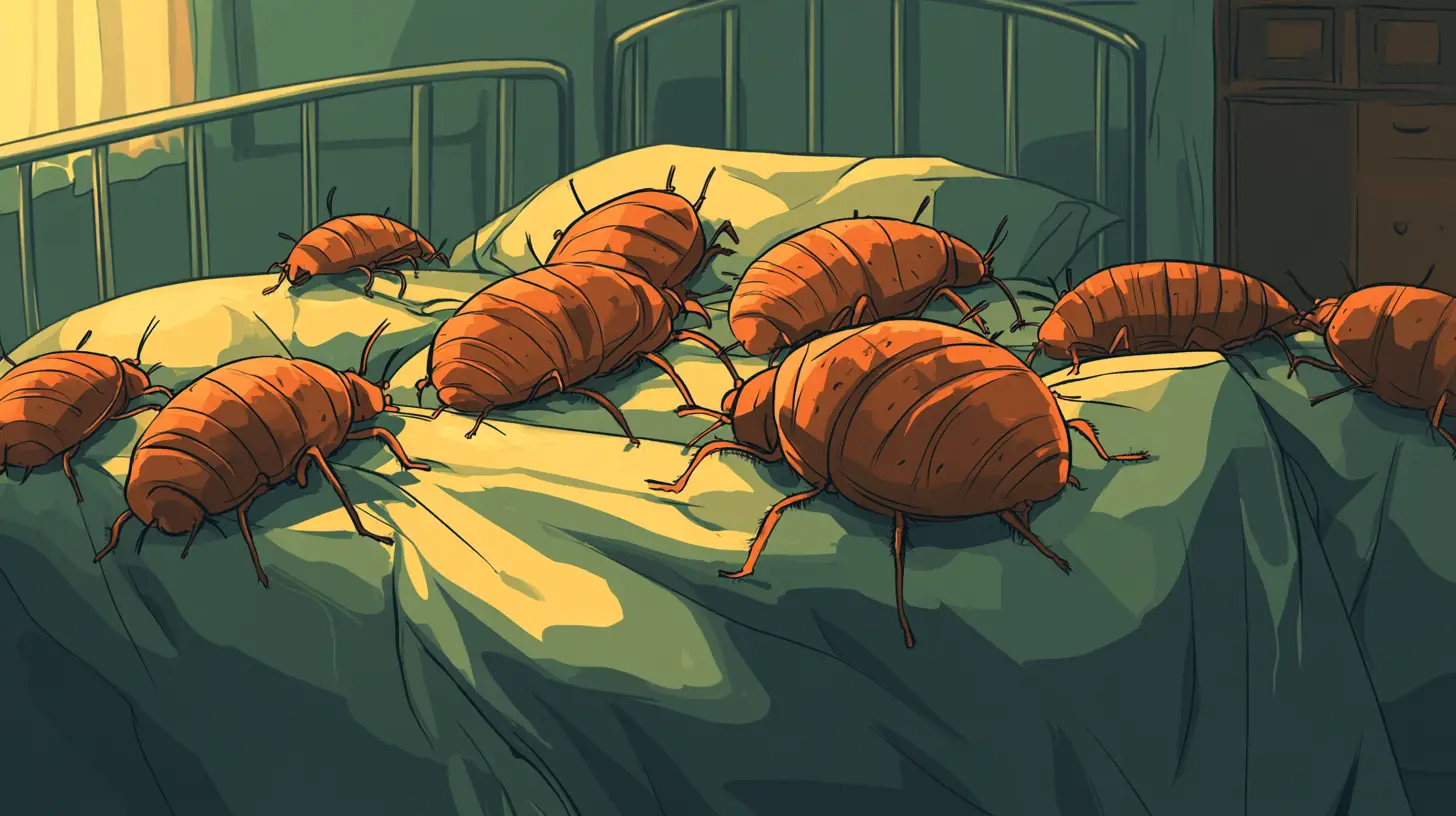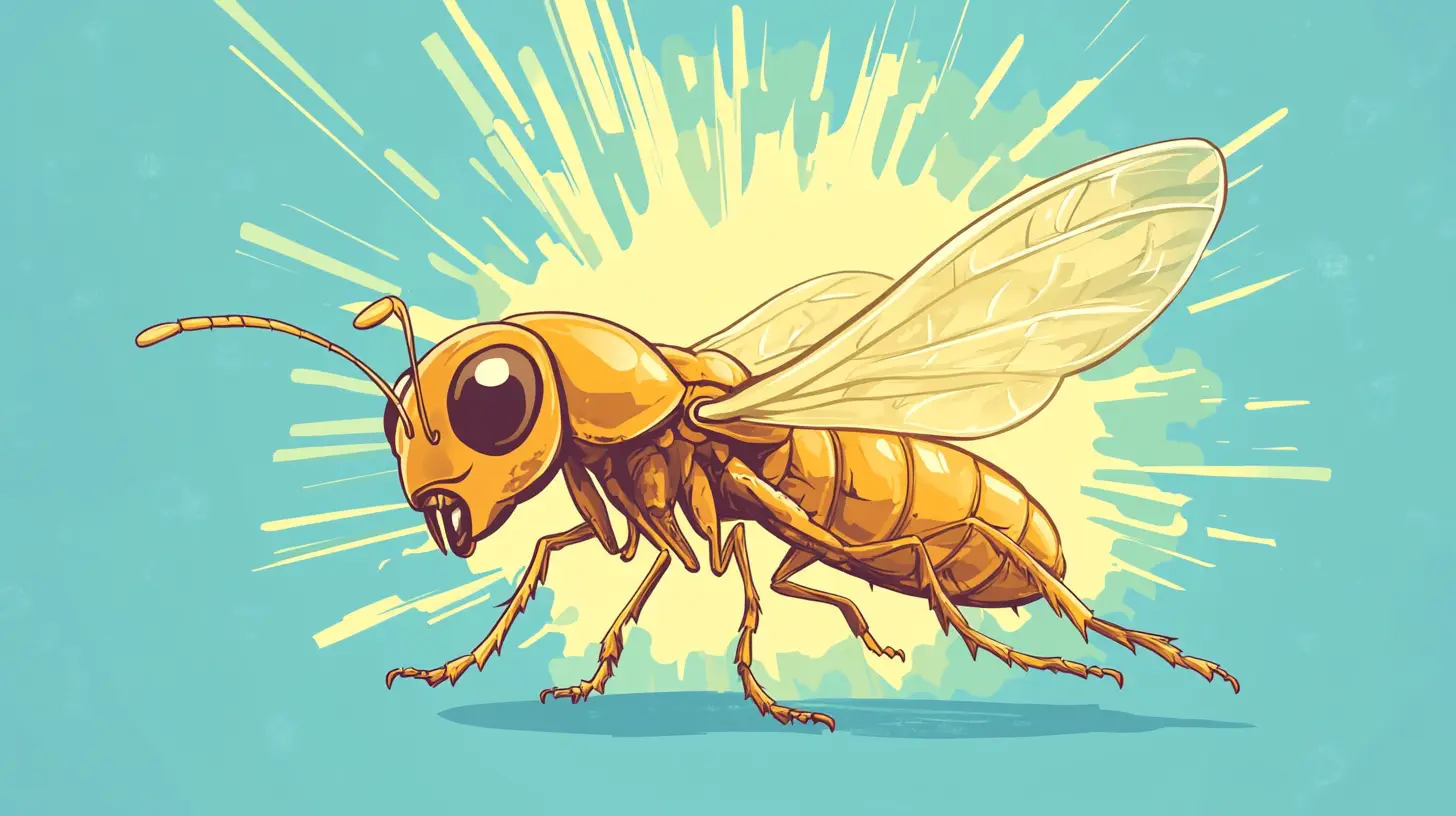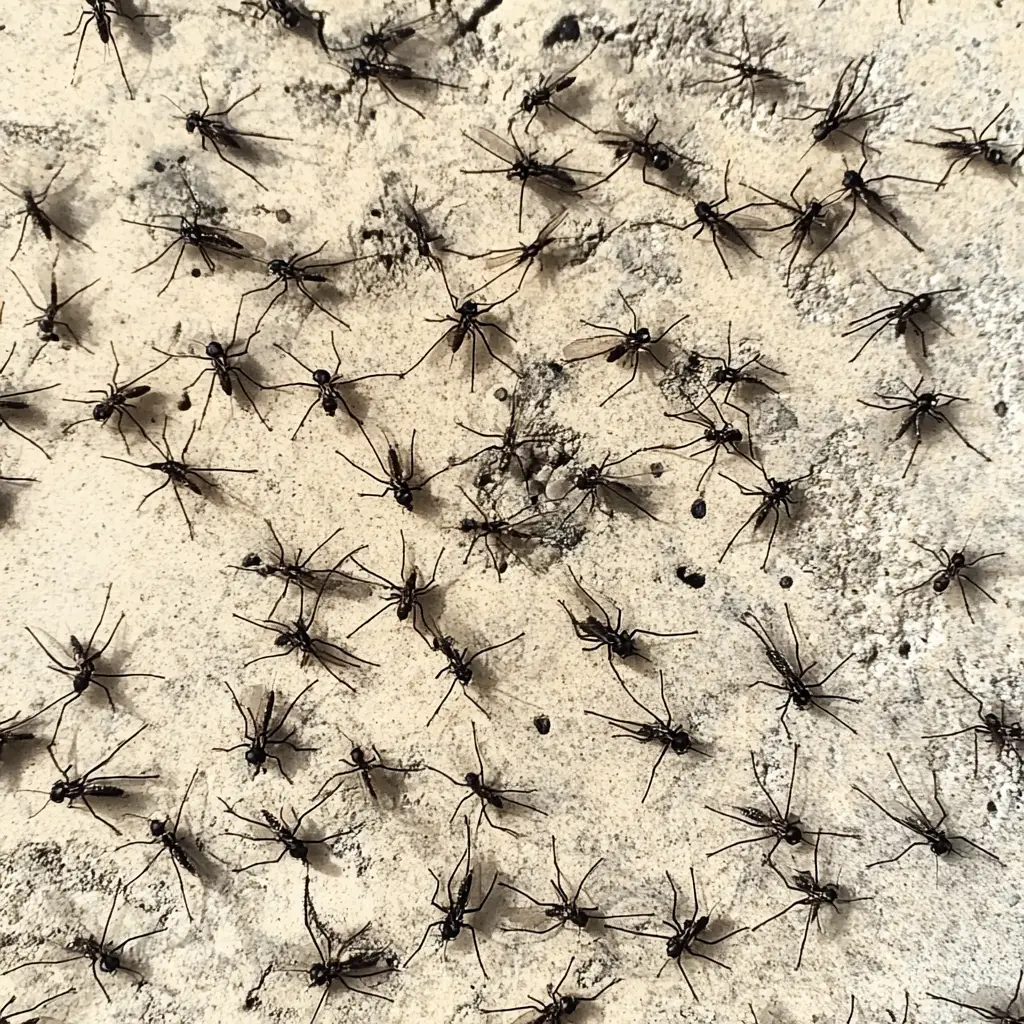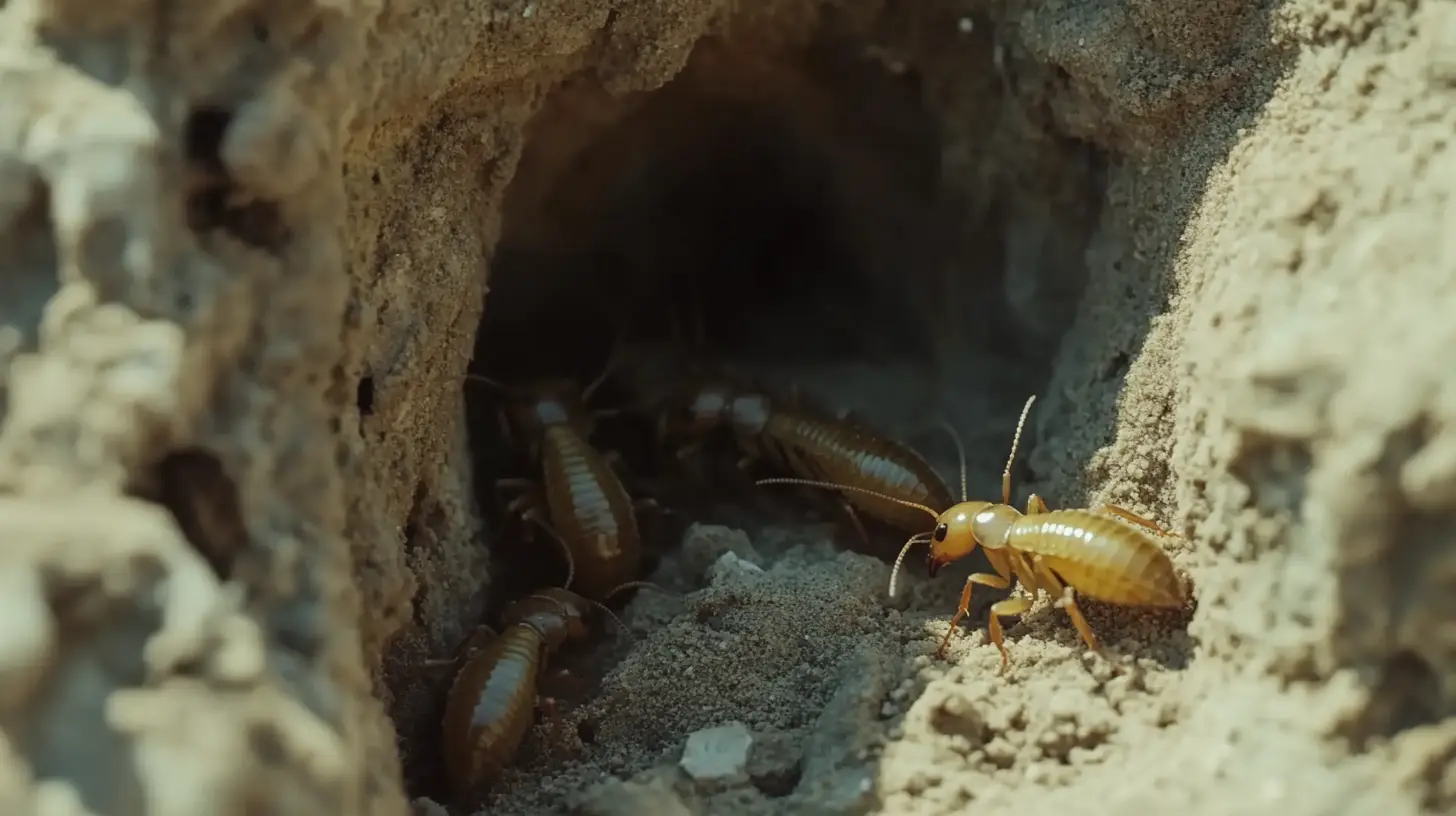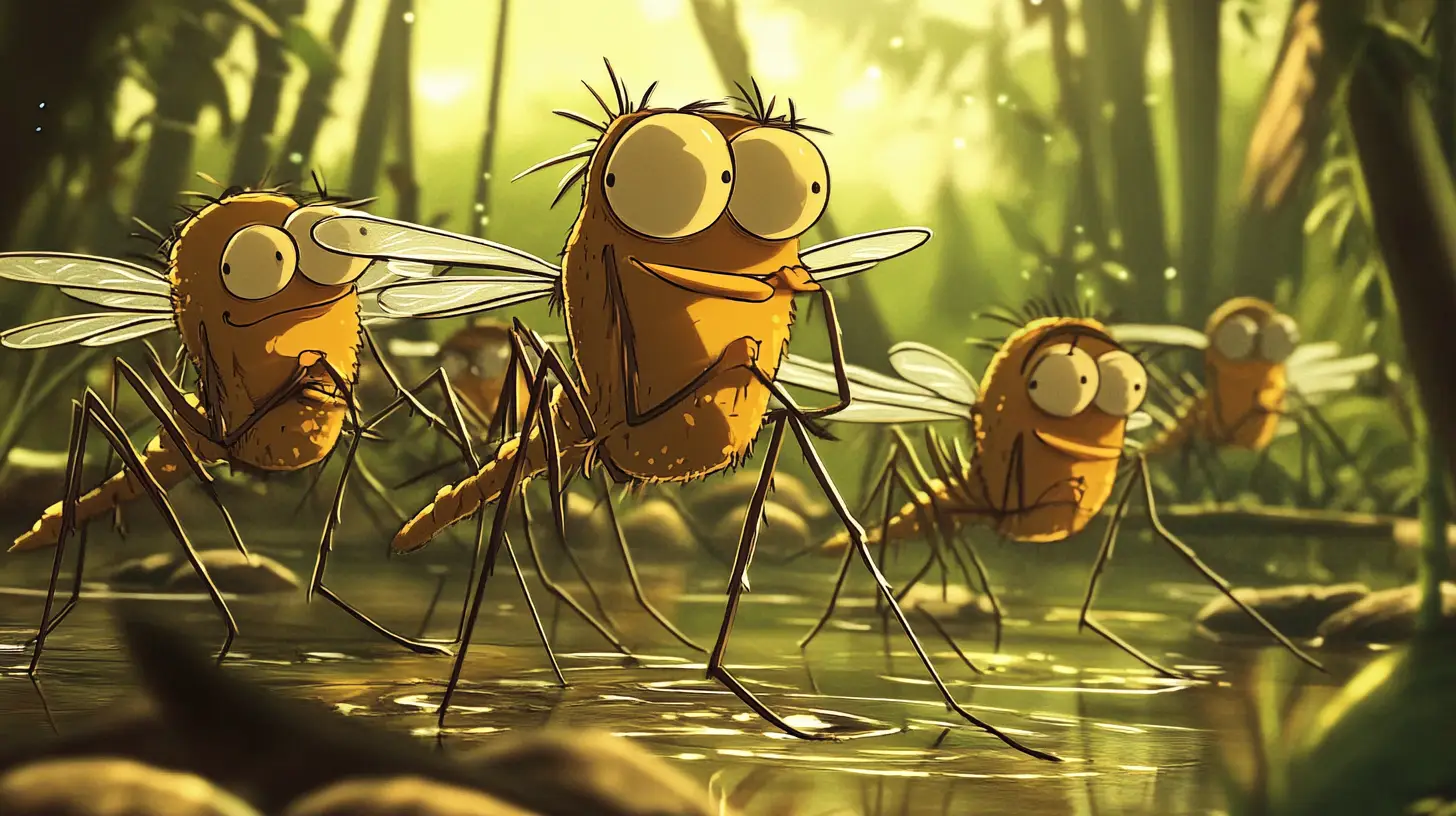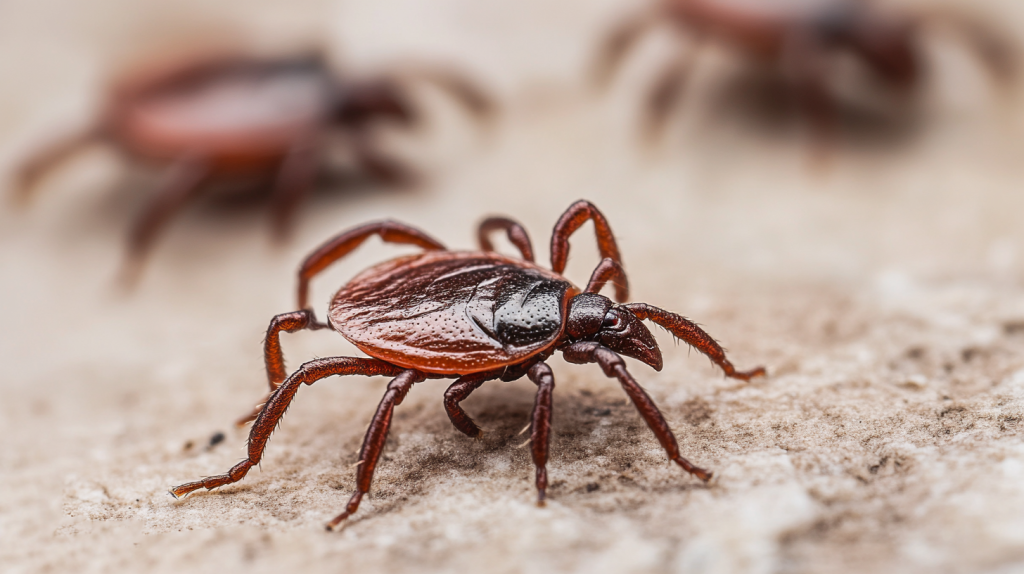
Table of Contents
If you’re living in Bradenton, the warm, humid climate can make your yard a prime habitat for ticks. These arachnids are more than just a nuisance—they can spread serious diseases like Lyme disease, Rocky Mountain spotted fever, and Ehrlichiosis. In fact, Florida is home to several tick species, including the American dog tick, Lone Star tick, and black-legged tick, all of which pose risks to both humans and pets.
Getting rid of ticks requires more than just removing a few after a hike; it’s about understanding their life cycle and habitat. Ticks can attach anywhere on the body, feeding on a wide range of hosts, from pets to people. What makes them even more insidious is their ability to survive for months without feeding, patiently waiting for the next host to brush by. Female ticks can lay thousands of eggs after just one blood meal, which means an untreated tick problem can quickly escalate.
If you’ve noticed ticks around your yard or home, it’s essential to act fast. By clearing overgrown grass, trimming shrubs, and using effective tick control measures, you can significantly reduce their population. This blog post will guide you through practical steps to get rid of ticks in Bradenton, ensuring your outdoor spaces remain safe and enjoyable for both your family and your pets. Keep reading to discover expert tips and local strategies for effective tick control.
Key Takeaways
- Florida, given its tropical climate, is a home to multiple species of ticks that pose a threat to human and pet health. The most common ones are the Blacklegged tick, the Lone Star tick, and the American Dog tick.
- The Blacklegged tick, also known as the “deer tick”, is notorious for spreading Lyme disease. These ticks prefer underbrush and tall grasses to latch onto a host.
- The Lone Star Tick, often found in woods, fields, and even urban areas is potentially dangerous to dogs and can cause Alpha-gal syndrome in humans.
- Known for causing severe illnesses, the American Dog tick can be found in wooded areas and fields with tall grass or rich shrubbery.
- Florida ticks are carriers of severe diseases such as Lyme Disease and Rocky Mountain Spotted Fever (RMSF). Symptoms can initially be mild but may progress to affect the heart, nervous system, and joints if left untreated.
- Protective clothing, usage of tick repellent, and regular tick checks are preventive steps recommended to safeguard from tick bites.
- In the event of a tick latch, it’s important to safely remove the tick using fine-tipped tweezers, clean the area afterwards to prevent infection, and keep a close watch for any symptoms. If any symptoms occur or the person feels unwell, it’s vital to seek professional help immediately.
Types of Ticks Found in Florida
The paradise known as Florida houses several types of ticks each having unique characteristics and impacts on the environment and your health. Some of the most common adversaries you might encounter are the Blacklegged tick, the Lone Star tick, and the American Dog tick.
Blacklegged Tick
The blacklegged tick, also known as the deer tick, is one of the most concerning tick species in Bradenton, largely because it’s the primary carrier of Lyme disease. These tiny, hard-to-spot arachnids thrive in Florida’s warm and humid climate, making it crucial for local residents to understand how to get rid of black-legged ticks and prevent tick-borne illnesses.
Blacklegged ticks are particularly dangerous because they can attach anywhere on the body, often going unnoticed due to the painless bite they deliver. They seek out both humans and animals as hosts, and once attached, they can stay latched on for days. What’s more, these ticks are known for their long lifespan—they can survive for several months without feeding, patiently waiting for their next opportunity.
A not-so-fun fact about these ticks is their preferred setting. Blacklegged ticks love underbrush and tall grasses where they use a tactic called Questing. They simply stretch out their front legs, waiting to latch on to a host, like whitetail deer or your loving pet. They can also harbor an annoying range of diseases including babesiosis, anaplasmosis, and Powassan virus disease among others.
Getting rid of black-legged ticks requires a proactive approach. These ticks often hide in tall grass, leaf piles, and shady wooded areas, so regular yard maintenance is key. Clearing debris, trimming back vegetation, and creating barriers between wooded areas and your home can greatly reduce tick activity. This post will provide you with expert insights on how to effectively get rid of black-legged ticks in Bradenton, keeping your outdoor spaces safe from these disease-carrying pests.
Blacklegged Tick (Deer Tick) Identification
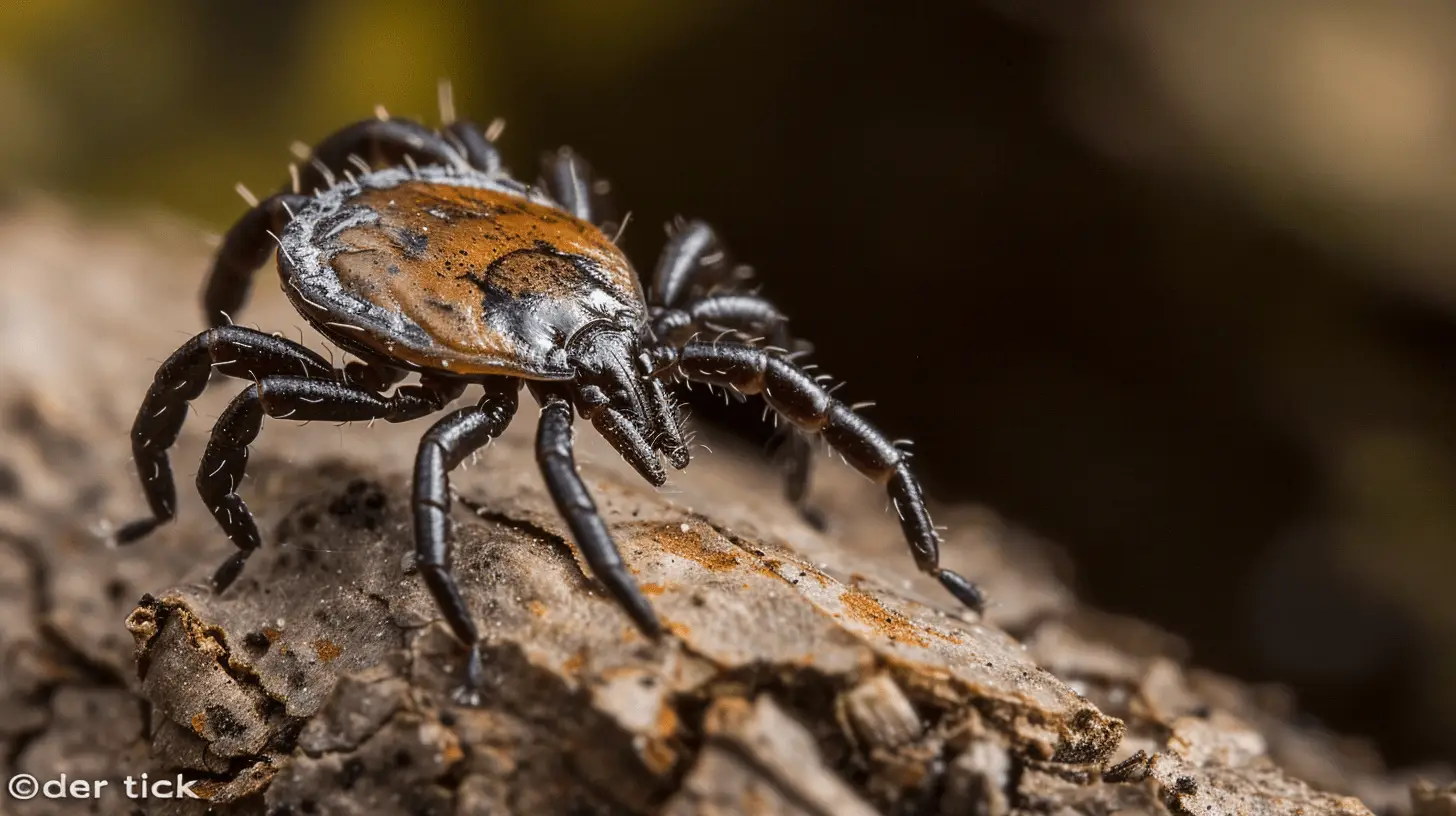
Based on the search results, here are the key points for identifying blacklegged ticks (also known as deer ticks):
Physical Characteristics
- Adult females are about 3-5 mm long when unfed, nymphs are about the size of a poppy seed
- Adult females have a distinctive orange-red body surrounding a black scutum (shield) on their back
- Males are smaller and entirely dark brown or black
Key Identifying Features
- Long, narrow mouthparts visible from above
- Black legs
- No festoons (rectangular areas) along the rear edge of the body
- Oblong shield (scutum) that covers only part of the female’s body, but most of the male’s body
Life Stages
- Larvae: Tiny, about the size of a grain of sand
- Nymphs: About the size of a poppy seed
- Adults: Females are larger than males, about the size of a sesame seed when unfed
Behavior
- Often found questing (waiting for a host) on the tips of low vegetation
- Active in spring and fall when temperatures are above freezing
- Nymphs are most active in late spring and early summer
Habitat
- Primarily found in wooded, brushy areas
- Also present in tall grasslands and shrubs bordering forest edges
It’s important to note that accurate identification can be challenging, especially for immature stages. When in doubt, it’s best to have the tick identified by an expert, particularly if there are health concerns related to potential tick-borne diseases.
Lone Star Tick
The Lone Star tick is one of the more aggressive tick species found in Bradenton, known for actively seeking out hosts rather than waiting passively. This tick is easily recognizable by the distinctive white dot on the back of adult females, and it poses significant health risks. Lone Star ticks can transmit diseases like Ehrlichiosis, and in some cases, their bites have been linked to Alpha-gal syndrome, a condition that causes a red meat allergy in humans.
What makes the Lone Star tick particularly challenging is its tendency to latch on to both humans and pets, feeding for days while remaining largely unnoticed due to their painless bites. These ticks thrive in wooded areas, tall grasses, and brush, which are common in Florida’s warm, humid environment. They’re also resilient, surviving for extended periods without feeding and laying hundreds of eggs at a time.
To effectively get rid of Lone Star ticks, it’s essential to maintain your yard by clearing tall grass, trimming back shrubs, and removing leaf litter. Creating a barrier between wooded areas and your yard can also help reduce their presence. In this blog post, we’ll explore practical steps to get rid of Lone Star ticks in Bradenton and ensure your outdoor spaces are safer for both your family and pets. Keep reading for expert advice on tick prevention and control tailored to the Florida climate.
Lone Star Tick Identification
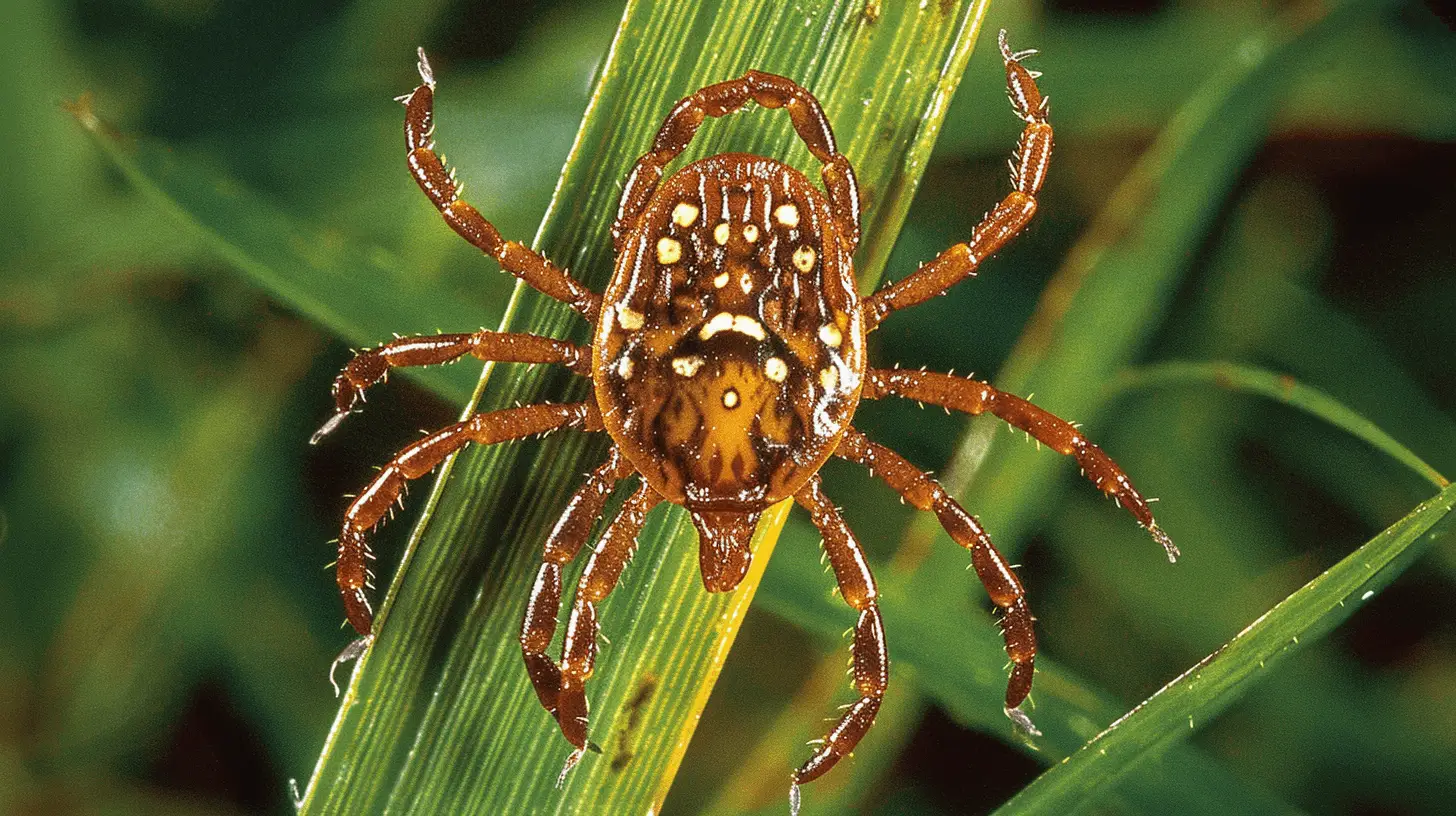
Based on the search results, here are the key points for identifying Lone Star ticks:
Physical Characteristics
- Adult females are about 3-5 mm long when unfed, up to 16 mm when fully engorged
- Reddish-brown color, becoming slate gray when engorged
- Adult females have a single white or silvery spot (“lone star”) on their back
- Males are slightly smaller than females and have several inverted horseshoe-shaped whitish spots along their backs
Other Identifying Features
- Oval, flattened body shape
- Festoons (rectangular areas) along the outer portion of their body
- Long mouthparts visible from above
Life Stages
- Larvae: Six-legged, about the size of a grain of sand
- Nymphs: Eight-legged, about the size of a poppy seed
- Adults: Females larger than males, about 1/8 to 1/4 inch long when unfed
Behavior and Habitat
- Aggressive biters that move quickly
- Found in wooded areas with dense undergrowth and low-growing vegetation
- Active in spring and early summer (adults and nymphs)
To accurately identify a Lone Star tick:
- Look for the distinctive white spot on adult females
- Check for the oval body shape and reddish-brown color
- Observe the long mouthparts
- Note the presence of festoons along the body’s edge
If you’re unsure about identification, it’s best to consult with a professional or submit the tick to a local health department or tick identification program for accurate species determination.
American Dog Tick
The American dog tick is one of the most common tick species found in Bradenton, and it’s particularly well-known for its role in transmitting Rocky Mountain spotted fever and Tularemia. These ticks typically target dogs but will also feed on humans, posing serious health risks. Adult American dog ticks are larger than many other species, making them easier to spot, but their painless bites often go unnoticed, allowing them to stay attached and feed for days.
American dog ticks are commonly found in grassy fields, along trails, and in wooded areas, making outdoor activities a high-risk venture for both you and your pets. Unlike some other tick species, the American dog tick does not carry Lyme disease, but the diseases it does transmit are equally dangerous. They can also survive for long periods without feeding, which means these ticks can be present even when hosts are scarce.
To get rid of American dog ticks, you need a combination of yard maintenance and proactive pest control. Regularly mowing the lawn, trimming back vegetation, and keeping outdoor areas clear of debris can significantly reduce tick populations. Additionally, creating tick-safe zones around your home—especially in areas where pets play—can further minimize the risk of an infestation. In this post, we’ll cover the best methods to get rid of American dog ticks in Bradenton, providing you with expert tips to protect your home and pets from these pests.
American Dog Tick Identification
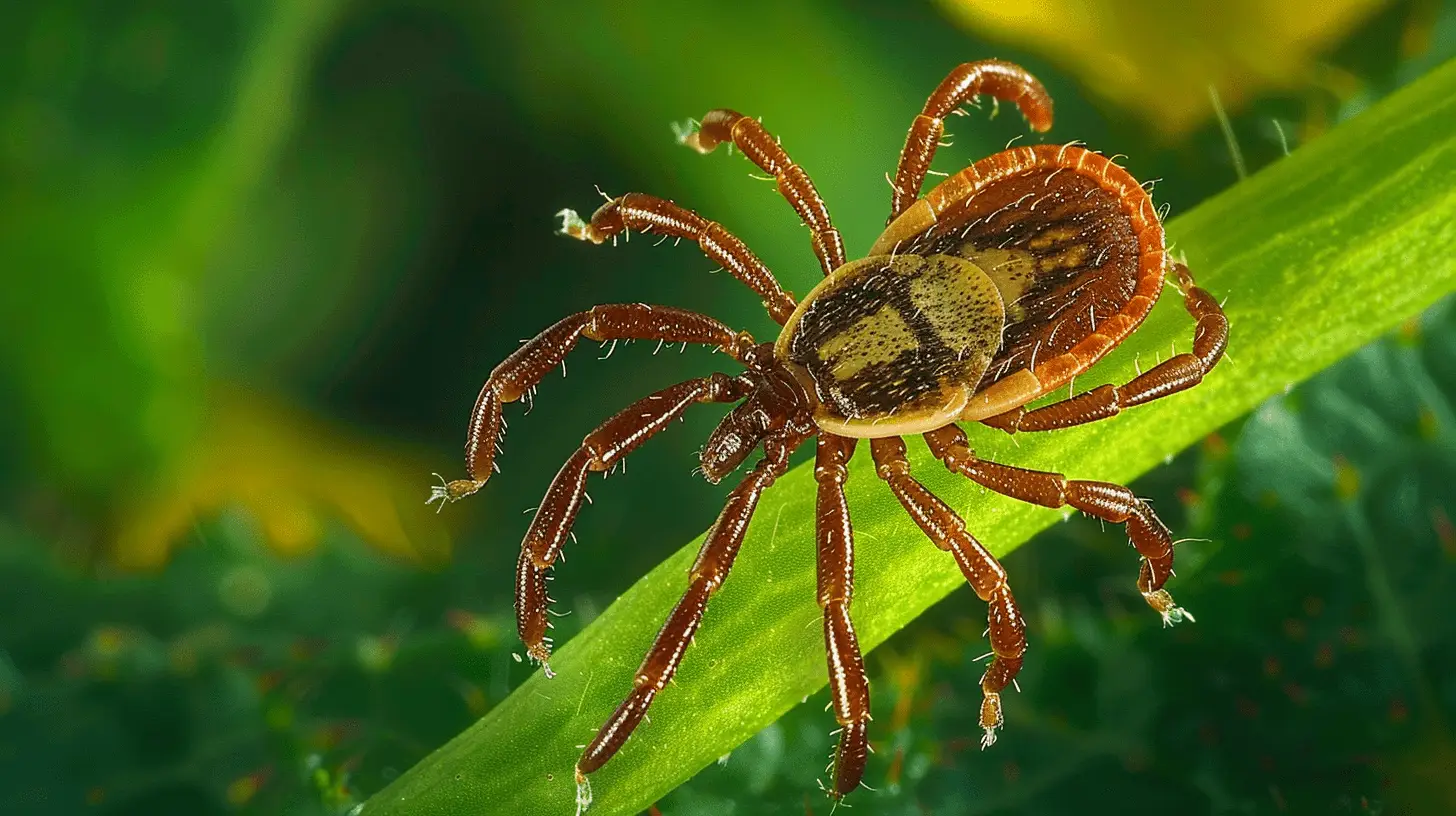
Based on the search results, here are the key points for identifying American Dog Ticks (Dermacentor variabilis):
Physical Characteristics
- Adult females are about 5 mm long when unfed, up to 15 mm when engorged
- Brown to reddish-brown with gray/silver markings on their scutum (dorsal shield)
- Females have a small white scutum covering about 1/3 of their back
- Males have a mottled appearance with diffuse white markings covering most of their back
- Visible mouthparts when viewed from above
- Festoons (rectangular areas) along the rear edge of the body
Other Identifying Features
- Oval, flat body shape when unfed
- Eight legs as adults and nymphs (six legs as larvae)
- Second segment of palps about as long as it is wide
Life Stages
- Larvae: Yellow before feeding, gray to black when engorged, about 0.62 mm long
- Nymphs: Pale yellow-brown before feeding, slate gray when engorged, about 0.9 mm long
- Adults: Females larger than males, 3.6-5 mm long when unfed
Behavior and Habitat
- Found in areas with little or no tree cover, such as grassy fields, scrubland, and along trails
- Adults are most active from mid-April to early September
- Larvae active from March through July
- Nymphs usually found from June to early September
To accurately identify an American Dog Tick:
- Look for the distinctive white markings on the scutum
- Check for the oval body shape and reddish-brown color
- Observe the visible mouthparts from above
- Note the presence of festoons along the body’s edge
If you’re unsure about identification, it’s best to consult with a professional or submit the tick to a local health department or tick identification program for accurate species determination.
Common Diseases Spread by Ticks in Florida
As you continue to explore the fascinating yet potentially dangerous world of ticks, it’s essential to comprehend the diseases they can transmit. Florida ticks, notably the Blacklegged tick and the American Dog tick, don’t just come with a menace but also the threat of severe diseases. Such diseases can cause remarkable distress, chronic conditions, or even prove fatal if left untreated.
Preventing Tick Bites in Florida
Being outdoors in the Sunshine State is an appealing prospect. But, it’s crucial to protect yourself from Florida ticks. Here, we’ll guide you through some steps you can take to prevent the pernicious bites of these pesky insects.
Wear Protective Clothing
While soaking up that Florida sunshine, your choice of attire can play a sizeable role in safeguarding you from tick bites. Long sleeves and pants are ideal, even in the heat. Not ideal for the tan lines, but certainly better than contracting a serious disease. You might not win any style contests, but it’s preferable to being targeted by these miniature menaces!
Use Tick Repellent
Prevention skills will need to go a step further if you’re trudging through tick territory. Apply repellents with DEET to any exposed skin, and treat your clothes with permethrin insecticide for an added layer of protection. Don’t consider these steps as optional before your outdoor adventures.
Perform Tick Checks
Finally, it’s imperative to conduct a thorough tick check after you’ve spent time outdoors. Shower as soon as possible to wash away unattached ticks. Use a mirror to inspect hard-to-see areas. Found a tick? Don’t panic! Reach for your fine-tipped tweezers and pull the tick upwards with steady force.
Tick Removal Tips
Encountering Florida ticks is certainly not a pleasant experience, but it’s vital to know what to do if you find one latched onto your skin.
Use Fine-Tipped Tweezers
Your first step is to fetch a pair of fine-tipped tweezers. These are the safest and most tool for the job, reducing the risk of mishaps. Grab the tick as closely to the skin’s surface as possible. It’s essential not to twist or jerk as this could leave intricate mouthparts in your skin – the last thing you want! Remember, you’re trying to coax this unwelcome guest off your skin, so apply steady, even pressure and pull upwards.
Clean the Area
Once the tick has been safely removed, it’s time to clean the area. Don’t ignore this step, as it’s crucial for preventing infection. Use warm water and soap, applying gently to the bite. You might also use a dab of antiseptic lotion as an extra measure against bacteria. But whatever you do, resist the urge to scratch, no matter how itchy it gets!
Watch for Symptoms
Last but not least, keep a close eye on the bite site for a few days. Some gems Florida ticks may carry include The Heartland Virus, Tularemia, or even Lyme Disease. Early symptoms showing up may include redness, swelling, or sores on the skin where you were bitten.
Remember, when it comes to Florida ticks, your best defense is a good offense. Stay vigilant and always check for ticks after spending time outdoors. If you find one, use fine-tipped tweezers for removal and clean the area thoroughly.
Watch out for signs of The Heartland Virus, Tularemia, or Lyme Disease. Don’t hesitate to seek medical help if symptoms appear. Your health is paramount, and with careful attention, you can enjoy Florida’s great outdoors while minimizing the risk of tick-borne diseases.
Frequently Asked Questions (FAQs)
How do you determine the duration of a tick’s attachment?
Ticks typically require 36 to 48 hours of feeding to feed and transmit the bacterium that causes Lyme disease. Once engorged, a tick is noticeably larger and rounder, indicating it has been attached for the said duration.
What happens if bitten by a lone star tick?
Contrary to common misunderstanding, lone star ticks do not cause Lyme disease. Individuals bitten by these ticks occasionally develop a circular rash resembling the rash associated with early Lyme disease.
What does a Florida tick look like?
Florida ticks are small, reddish, and possess a dark, black color on their backs. The larvae have six legs and pose a significant risk as they can feed for an extended period undetected, thus transmitting diseases.
How long after a tick bite does meat allergy develop?
An allergic response to Alpha-gal or meat allergy can occur at any time after a tick bite. It does not coincide with the moment of the tick bite and can present even months or years after the initial bite.
Should I consult a doctor if I find a tick on me?
Yes, especially if the tick is not properly removed! In such a situation, it’s advisable to seek medical attention where a healthcare professional can safely remove the tick after numbing the infected area.



